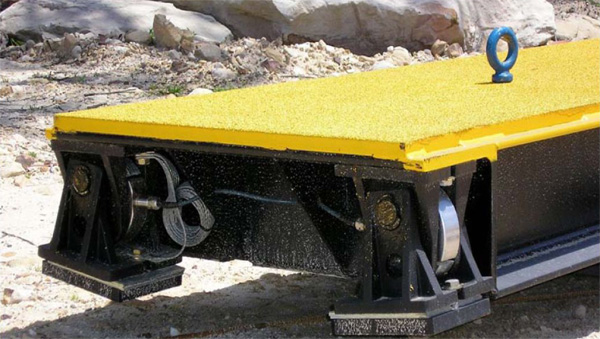Axle Weighing Systems
Weight Technology Dynamic Axle Weighbridges:
Some vehicles have compensating suspensions (tri-axle trailers, 4 axle rigids etc) which will transfer weight between themselves in response to the vehicle stopping and starting. The only means of accurately determining the load applied to each axle is to weigh the vehicle in motion at low speed on a dynamic axle weighbridge.
Dynamic weighbridges are widely used by the Department of Transport for axle weight enforcement throughout Britain and provide axle and gross weights for vehicles of all types. The vehicle is weighed in motion at a constant speed of up to 2.5mph, to avoid the weight transfers caused by stopping and starting. This necessitates perfectly flat concrete approaches either side of the weighing platform.
Typical users other than law enforcement include breweries and supermarket distributors who operate considerable numbers of articulated vehicles carrying a mixture of products and who want to get the load distribution correct.
Static Axle Weighbridge:
Two axle vehicles have no compensating mechanism to transfer weight and can thus be weighed statically on an axle-by-axle basis. A Single Axle Static system can thus be used for these applications. Typical users include public utilities or secondary distribution companies operating vehicles up to 18 tonnes.
Where the prime concern is to monitor stock control possible being transported on bigger vehicles, larger platforms can be used to weigh groups of compensating axles together. For instance in agriculture, a farmer would be very interested in checking the weight of product leaving the farm but may be less concerned about legal axle weights. He could thus use what we term a Multi Axle weighbridge which has a platform big enough to weigh compensated bogies as a group.
A smaller platform for weighing pairs of axles is widely used by companies monitoring product arriving and leaving on 4 axle rigids. Typical users include local authorities and waste contractors.

